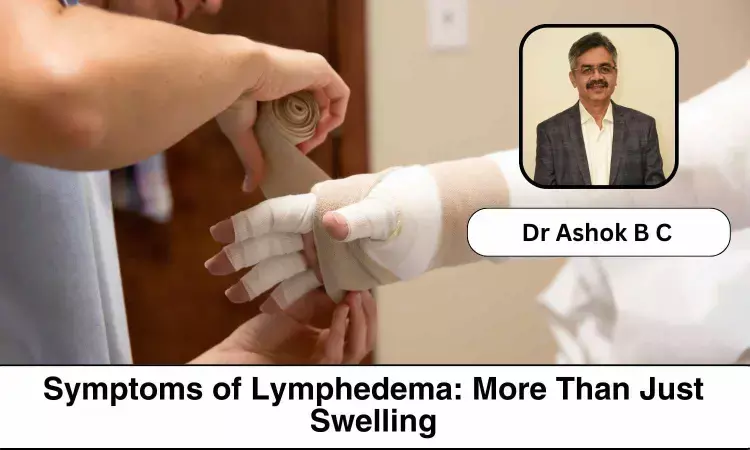- Home
- Medical news & Guidelines
- Anesthesiology
- Cardiology and CTVS
- Critical Care
- Dentistry
- Dermatology
- Diabetes and Endocrinology
- ENT
- Gastroenterology
- Medicine
- Nephrology
- Neurology
- Obstretics-Gynaecology
- Oncology
- Ophthalmology
- Orthopaedics
- Pediatrics-Neonatology
- Psychiatry
- Pulmonology
- Radiology
- Surgery
- Urology
- Laboratory Medicine
- Diet
- Nursing
- Paramedical
- Physiotherapy
- Health news
- Fact Check
- Bone Health Fact Check
- Brain Health Fact Check
- Cancer Related Fact Check
- Child Care Fact Check
- Dental and oral health fact check
- Diabetes and metabolic health fact check
- Diet and Nutrition Fact Check
- Eye and ENT Care Fact Check
- Fitness fact check
- Gut health fact check
- Heart health fact check
- Kidney health fact check
- Medical education fact check
- Men's health fact check
- Respiratory fact check
- Skin and hair care fact check
- Vaccine and Immunization fact check
- Women's health fact check
- AYUSH
- State News
- Andaman and Nicobar Islands
- Andhra Pradesh
- Arunachal Pradesh
- Assam
- Bihar
- Chandigarh
- Chattisgarh
- Dadra and Nagar Haveli
- Daman and Diu
- Delhi
- Goa
- Gujarat
- Haryana
- Himachal Pradesh
- Jammu & Kashmir
- Jharkhand
- Karnataka
- Kerala
- Ladakh
- Lakshadweep
- Madhya Pradesh
- Maharashtra
- Manipur
- Meghalaya
- Mizoram
- Nagaland
- Odisha
- Puducherry
- Punjab
- Rajasthan
- Sikkim
- Tamil Nadu
- Telangana
- Tripura
- Uttar Pradesh
- Uttrakhand
- West Bengal
- Medical Education
- Industry
Decoding Lymphedema: Symptoms, Diagnosis, and Proactive Solutions - Dr Ashok B C

The pain begins to get worse the longer you sit or stand; if you have been saying this too often, chances are you might be suffering from lymphedema. Lymphedema is swelling due to the accumulation of fluids in the system, and lymph comes from the lymphatic system. It is basically fluid that builds in the tissues and limbs.
But you are not alone; Lymphedema is a chronic condition affecting millions globally. In the article below, we will understand the nuances of lymphedema and its identification to management, uncovering the complexities of this often misunderstood condition.
Identifying the symptoms: More than just swelling
There can be a variety of reasons for the swelling. Still, if it is accompanied by heaviness, tightness, limited mobility, joint stiffness, or skin changes, it points to elephantiasis or, in medical terms, lymphedema. It also increases your susceptibility to infections.
Diagnosis Dilemmas: Unravelling the Mysteries
The identification requires a keen eye and a thorough medical examination. It can often be confused with lipoedema, a build-up of fluids due to excess fatty tissue in arms and legs; lymphedema requires a precise diagnosis.
Your healthcare provider may use methods like physical examination and medical history analysis to make initial assessments. While blood, urine, and tissue studies are not the primary markers, they might be used to check for underlying causes if the origin is unknown. Further, advanced imaging techniques are used to differentiate and gauge its severity.
Primary vs. Secondary Lymphedema: There are two of them.
The disease can either present as an inherited condition due to genetics, called Primary Lymphedema or due to post-medical procedures or to injury, infection, or any other obstruction, such as surgery, to the lymphatic system, called secondary lymphedema.
Primary lymphedema is almost like a time bomb with a different length of fuse. It might show up at birth or within two years of birth, at puberty or within a decade of puberty, or after 35 years of age.
Secondary lymphedema happens most commonly due to infections, surgical excision of the lymph nodes, radiation therapy, or other medical procedures. Breast cancer is the most common cancer associated with secondary lymphedema.
Facing reality: The Consequences of Ignoring Lymphedema
The consequences can escalate from simple swelling to recurring infections, skin alterations, and diminished mobility. While the exact progression is difficult, left untreated, it can lead to swelling of hands and legs, skin becoming scaly and thick, small blisters developing on the skin, and lymphatic fluids leaking out of the skin.
Proactive Measures: Managing Lymphedema for a Quality Life
Still, not all is lost, as the disease can be effectively managed. Maintaining a healthy weight, exercising gently, adopting a balanced diet, and having a proper skincare routine are crucial elements. Lifestyle modification, avoiding tight clothing, staying hydrated and having regular medical check-ups can play pivotal roles in preventing or managing lymphedema.
Home Remedies and Beyond: Empowering Self-Care
Beyond conventional methods, individuals can explore home remedies. Manual lymphatic drainage techniques, cold packs for swelling reduction, and specific exercises under healthcare guidance offer additional avenues for relief.
Advancement in treatment
Recent advancements in lymphedema treatment include innovative surgical techniques such as lymphatic venous anastomosis, where the connection is made between lymphatics and veins bypassing the blockage, vascularised lymph node transfers, or Robotic assisted lymphatic surgery and ICG-guided MLD.
Seeking Professional Guidance: A Crucial Step
Disclaimer: The views expressed in this article are of the author and not of Medical Dialogues. The Editorial/Content team of Medical Dialogues has not contributed to the writing/editing/packaging of this article.
Dr Ashok BC MBBS, MS (General Surgery), MCh (Plastic Surgery), DNB (Plastic Surgery), FNB (Hand and Microsurgery) is a Surgeon at Aster Whitefield Hospital, Bengaluru, having an experience of 34 years. Dr Ashok specialises in Plastic Surgery and Hair Transplant Surgery.


